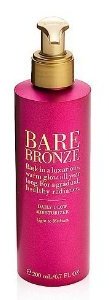
By Dr. Cheryl Hull, dermatologist and owner of Hull Dermatology
Spring is finally here, so I know lots of you want to start working on your tan. But you really do need to consider the options carefully before you decide how to get the summer color you want. New research has found that using tanning beds while you’re a teen or in your twenties is linked to an increase in the risk of developing melanoma — the deadliest form of cancer.
The International Agency for Research on Cancer (IARC) conducted a thorough review of several studies associating tanning bed use and melanoma risk. The researchers showed that the use of sunbeds under the age of 35 can increase melanoma risk by 75 percent. In July 2009, the International Agency for Research on Cancer (IARC), part of the World Health Organization, concluded that tanning devices that emit UV radiation are more dangerous than previously thought. The IARC moved these devices into the highest cancer risk category: “carcinogenic to humans.” (Also on the list of carcinogens are lead and arsenic.)
So is there any way to get a “safe tan”? The best alternative is using a sunless tanner, also called self-tanning lotions. Here’s how they work: Sunless tanners are topical products that contain dihydroxyacetone (DHA.) This chemical reacts with basic amino acids in the outermost layer of the skin, the “stratum corneum”, to form a brown-black pigment. It’s considered a very safe and effective method to achieve a tan. Sunless tanning preparations typically contain 3% to 5% DHA, in combination with any number of additional ingredients, including bronzers, vitamins, botanical extracts, antioxidants, and alpha-hydroxy acids.
To get the best results, you should exfoliate the skin before applying sunless tanners, and be sure to protect your palms, soles, nails and hair so the tan will look more natural. Go easy on areas that are prone to uneven coloration, such as elbows, knees and ankles. After application, you should see a color change within an hour, and the color will get darker between 8 and 24 hours after application. Most people see the color fade or disappear over the course of 3 to 5 days.
If you’ve been down the self-tanning aisle lately, you know there are LOTS of different brands and application techniques for sunless tanners. There are lotions, foams and aerosol sprays sold at retail stores. There are airbrush services available at salons and spas. You can also try the automated spray booths found at some tanning salons. If you use any of these, you should protect your eyes, lips and mucous membranes to prevent against accidental ingestion or inhalation of products that contain DHA.
Remember this: DHA provides only minimal ultraviolet protection. DHA alone gives you an SPF of about 3 or 4 — definitely not enough to protect against a burn. So be sure to use adequate sunscreen over your self-tanning product, and pick a sunscreen with an SPF of at least 30. Use it every day.
Don’t be misled by products that sound like self-tanning lotions — things with names like “tanning amplifiers,” “tan accelerators,” “tanning promoters,” “tanning enhancers,” and, worst of all, “tanning pills.” Many of these products interact with the sun to create the tan, so they actually end up exacerbating the damage done to your skin. 
Here’s hoping you all have a great spring and summer. And if you’re determined to have a great tan, be sure to get the kind that’s both safe and smart.
Note from the mamas: Here’s a list of self-tanning products we’ve tried and liked. Click on the name of each product to read more about it. If you have a favorite self-tanner that has worked well on your skin, click the word “comment” below and tell your fellow mamas the brand name and where to find it.
- Mystic Tan (automated spray booth found in some tanning salons)
- Neutrogena Micro-Mist Airbrush Sunless Tan
- Bare Bronze Sheer Self-Tan Mousse (available at Victoria’s Secret)
- Made in the Shade (from Arbonne International)
For more info on dermatology-related issues, contact Dr. Hull by calling her office at 479-254-9662. “Beauty Buzz” is sponsored by Hull Dermatology, with offices in Rogers, Bella Vista and at the Eureka Springs Hospital. Dr. Hull has published several scientific papers and has received numerous awards and honors for her work in dermatology. For more info, click here to visit the Hull Dermatology website.

Thanks for putting this info out! As an employee of Hope Cancer Resources, I am a huge proponent of sunless tanners – love the skin you were born with!! 🙂
I reposted this on the @hopenwa Twitter account!!